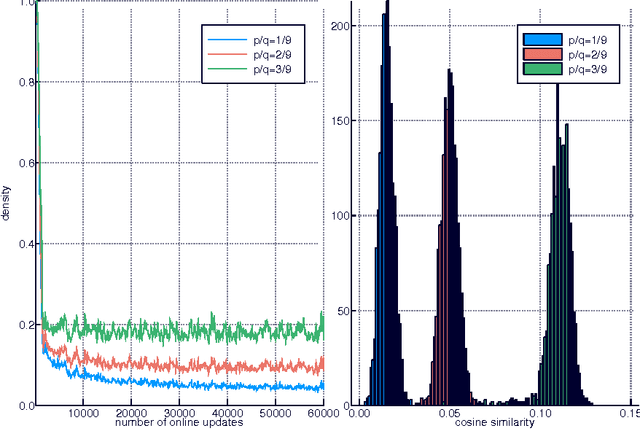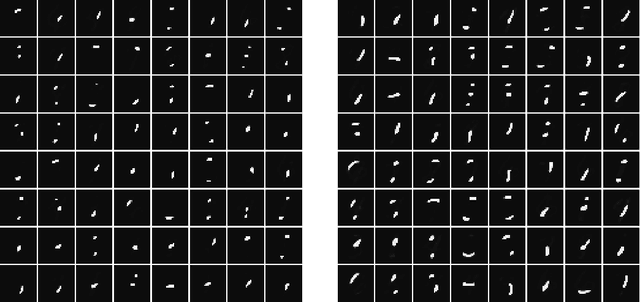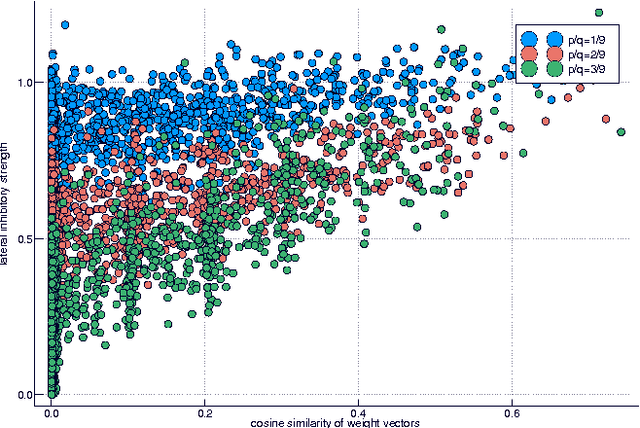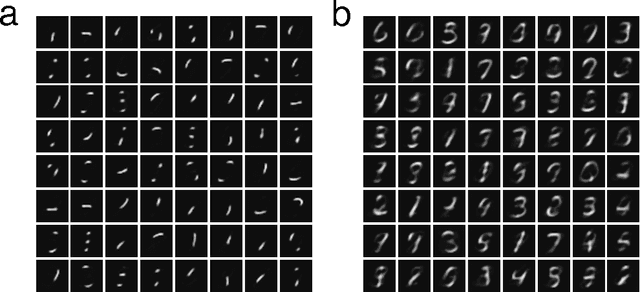A correlation game for unsupervised learning yields computational interpretations of Hebbian excitation, anti-Hebbian inhibition, and synapse elimination
Paper and Code
Apr 03, 2017



Much has been learned about plasticity of biological synapses from empirical studies. Hebbian plasticity is driven by correlated activity of presynaptic and postsynaptic neurons. Synapses that converge onto the same neuron often behave as if they compete for a fixed resource; some survive the competition while others are eliminated. To provide computational interpretations of these aspects of synaptic plasticity, we formulate unsupervised learning as a zero-sum game between Hebbian excitation and anti-Hebbian inhibition in a neural network model. The game formalizes the intuition that Hebbian excitation tries to maximize correlations of neurons with their inputs, while anti-Hebbian inhibition tries to decorrelate neurons from each other. We further include a model of synaptic competition, which enables a neuron to eliminate all connections except those from its most strongly correlated inputs. Through empirical studies, we show that this facilitates the learning of sensory features that resemble parts of objects.
 Add to Chrome
Add to Chrome Add to Firefox
Add to Firefox Add to Edge
Add to Edge